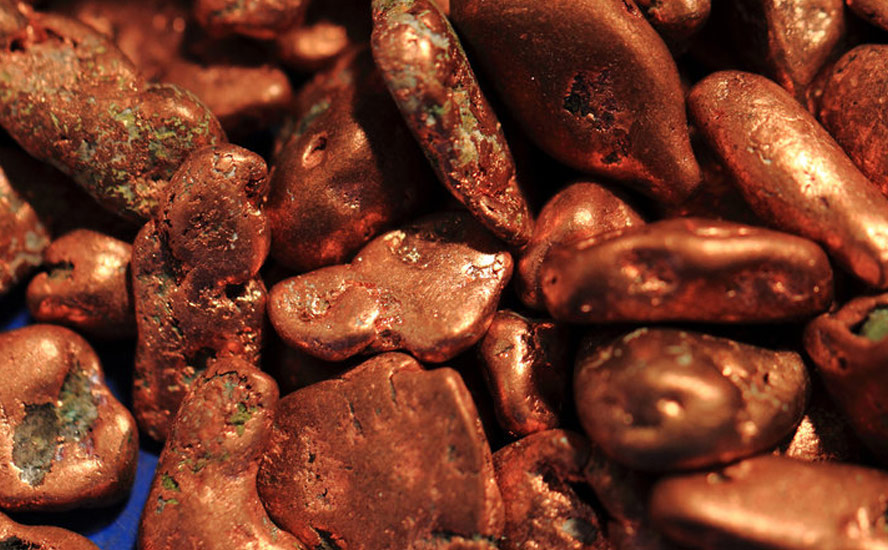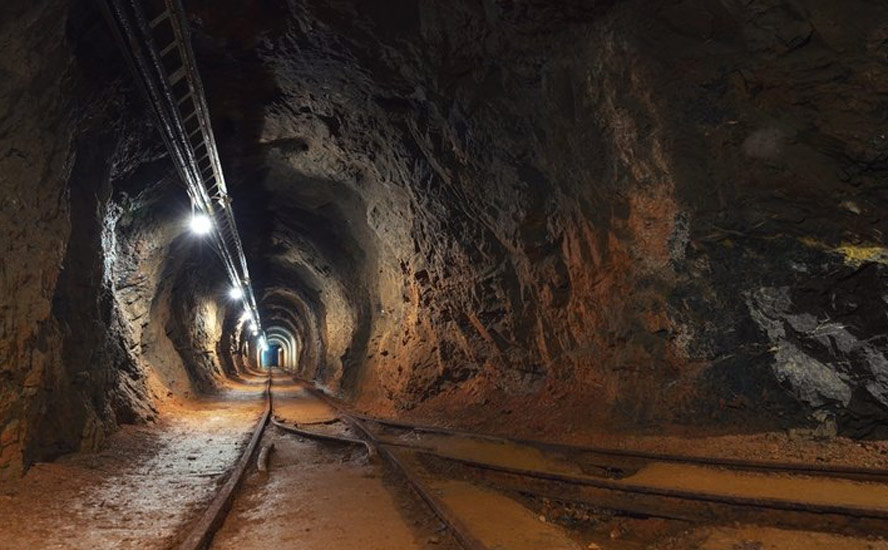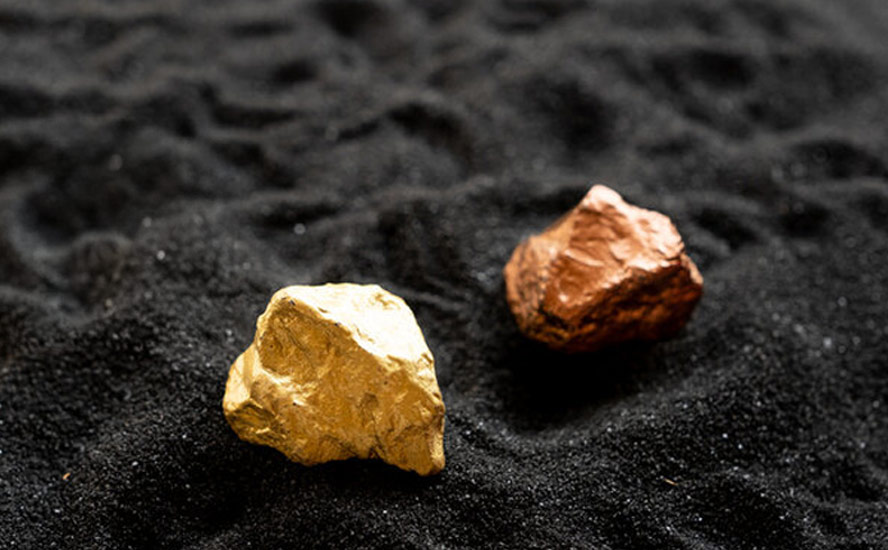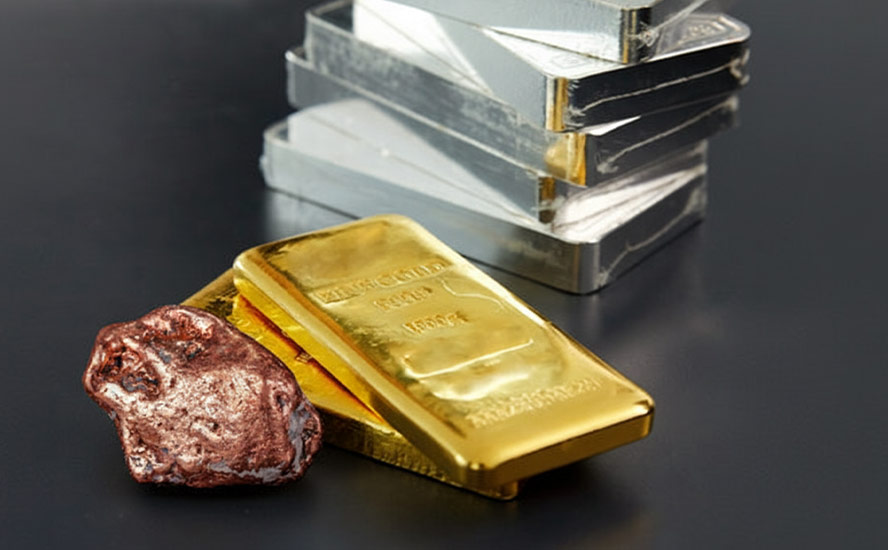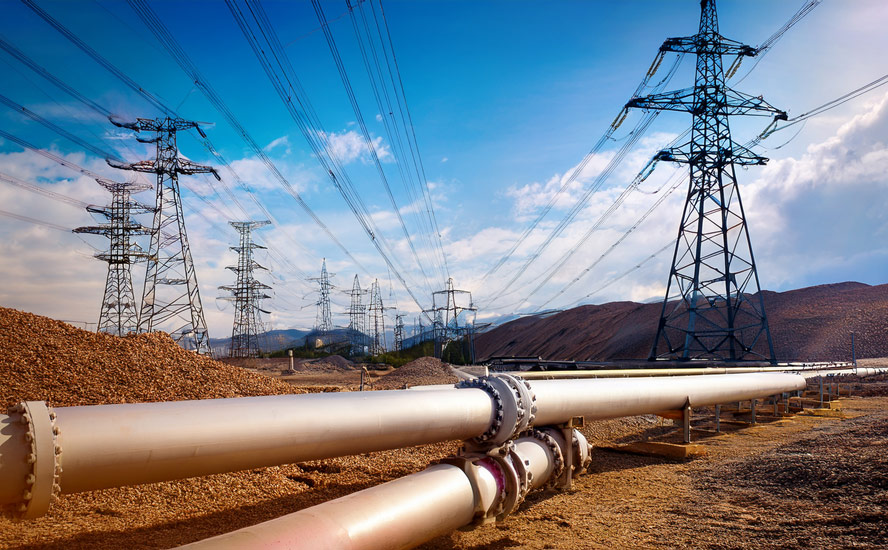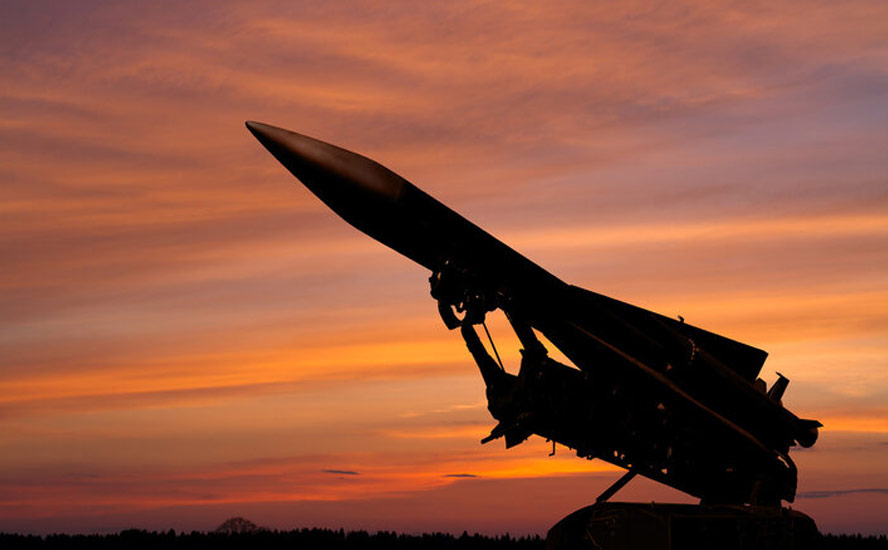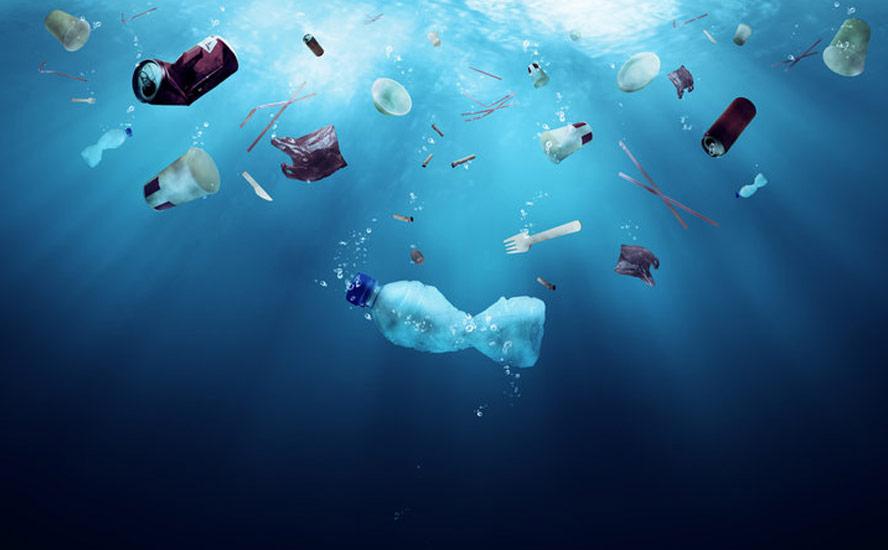Call for domestic mining of critical minerals is finally being answered
2021.03.16
North America relies heavily on foreign supplies of critical minerals — the raw materials it needs to become a leader in high technology, transportation, energy, and defense. Materials like lithium, graphite, and tin.
For years, the United States and Canada did not bother to explore for these minerals and build mines. Globalization brought with it the mentality that all countries are free traders, and friends. Dirty mining and processing? NIMBY. Let China do it, let the DRC do it, let whoever do it.
China recognized opportunity knocking and answered the door, seizing control of almost all REE processing and magnet manufacturing, in the space of about 10 years.
In 2019, as part of its trade war strategy, China raised the prospect of cutting exports of the commodities that are critical to America’s defense, energy electronics and auto sectors.
Suddenly, the once-remote possibility of using critical metals as pawns in the trade war, became more likely. But it is more than rare earths. The US is dependent on foreign countries for over 20 critical metals, including battery metals used in electronic devices like cell phones and electric vehicles.
US insecurity of supply
Without a reliable supply chain, a country must depend on outsiders. This gives foreign suppliers incredible leverage over the United States. There is always the possibility of slowed flows or bans on strategic materials, due to politics, acts of aggression/war or trade disputes.
The Trump administration recognized this when the former president issued an executive order in December 2017, instructing his government to devise “a strategy to reduce the Nation’s reliance on critical minerals” that are largely imported.

“The United States must not remain reliant on foreign competitors like Russia and China for the critical minerals needed to keep our economy and our country safe,” Trump said at the time. A US Geological Survey report concluded that the US relies on China for sourcing 20 out of the 23 minerals deemed critical for US national security and the economy.
If China were to suddenly refuse sale of any of these 20 metals such as manganese needed to make steel, or rare earths used by the military, the US economy and its defense capabilities would be in serious trouble.
Included on that list of 35 minerals are the building blocks of the new electrified economy, including lithium and graphite. China has a stranglehold on both metals, meaning it can use them as a cudgel in trade talks with the United States, or it could freeze shipments of them during a war.
If you think the latter is hyperbole, consider: Ongoing tensions between the US and Chinese navies over the South China Sea have reached a dangerous new level. Defense News reports the US Navy and Air Force have signed a contract for dozens of Long-Range Anti-Ship Missiles.

The $414 million deal with Lockheed Martin is for 137 LRASMs, which have a range of about 300 nautical miles. The publication notes that the contract comes amid simmering tensions concerning the People’s Liberation Army navy, which is expected to grow to 425 ships by 2030.
There is also the issue of Taiwan, which China considers a renegade Chinese province that must be reunited with the Motherland. The island is an important US ally and any attempt by China to take Taiwan by force will almost certainly be met with resistance from the US Navy.
To maintain its dominance in the EV market, Chinese manufacturers need a lot of cheap lithium. That explains why its largest lithium miner, Tianqi Lithium, owns 51% of Australia’s Greenbushes spodumene mine — the world’s dominant hard-rock lithium mine. And why China bid for, and got, a 23.7% stake in Chilean state lithium miner SQM, the second largest in the world, for $4.1 billion.
China produces roughly two-thirds of the world’s lithium-ion batteries and controls most of its processing facilities.
One way to meet the threat of foreign countries restricting, or embargoing, critical minerals, is to encourage the exploration and mining of these metals, in the United States or Canada.
Here at AOTH we have been advocating for the creation of a “mine to magnet” electric vehicle supply chain in North America for years, something that is finally appearing on the radar screens of governments and large mining companies.
More on that below.
We have also recognized the vulnerability of major economies like Canada and the United States to shortages of certain metals that are going to be heavily demanded in the coming decades, far beyond their traditional uses, as nations shift their economies from fossil fuels to renewable energy sources and strive to meet more stringent emissions regulations pertaining to vehicles and industry.
This dual mandate of electrification and decarbonization will require tens of millions more tonnes of copper, nickel and zinc.
Electrification
A Reuters analysis shows that automakers are planning on spending a combined $300 billion on electrification between 2019 and 2029.
Volkswagen has said it will invest $800 million to construct a new EV plant in Chattannooga, Tennessee, from which two battery-powered cars will be produced, starting in 2022. A ground-breaking took place in November 2019, proving that VW is serious about meeting its goal of manufacturing 50 million electric vehicles in the next several years.
GM is increasing its investment in electric and autonomous vehicles by $7 billion, bringing its total expenditures for these two areas to $27 billion. The Detroit-based automaker says it plans to have 30 EV models on the market by 2025, including the Cadillac Lyriq, Celestiq and full-size SUV; the 2022 Hummer pickup by GMC; and crossover models by Chevrolet and Buick.
Mercedez-Benz announced plans to set up an electric car production facility and battery plant at its existing Tuscaloosa, Alabama plant. The $1-billion expansion will include a new battery factory near the production site, with the goal of providing batteries for a future electric SUV under the brand EQ. Six sites are planned to produce Mercedes’ EQ electric-vehicle family models, along with a network of eight battery plants.
Gigafactories galore
The global lithium-ion battery industry is expected to grow at a CAGR of 16.4% within the next five years, reaching a value of $94.4 billion by 2025. Sustained demand from developed nations in North America and Europe and expanding Asian markets such as China, India, and South Korea will be the driving forces behind this growth.
Volkswagen recently announced plans to build six “gigafactories” (large battery-making facilities) in Europe, with a total production capacity of 240 gigawatt hours (GWh) by 2030. The first two plants will be operated in Sweden.
VW is also “vigorously pursuing” a public fast-charging network. Nasdaq reports the company and its partners plan to establish about 18,000 charge points in Europe by 2025.
Opened in 2016, Tesla’s Gigafactory in Nevada is a going concern. Every day 1,000 car sets are trucked to an assembly plant in Fremont, California. The three-storey structure, the size of a dozen football fields, has 13,000 people working for Tesla and its Japanese battery partner, Panasonic.
The company has two more gigafactories, in Shanghai and New York, and is planning a fourth in Austin, Texas.
Last year there were 136 EV battery plants in operation or being planned, with 101 in China and 8 in the US; incredibly, China is building a gigafactory at the rate of one per week.
These plants are not only pumping out batteries for EVs, which is by far the fastest-growing market for them, but utility-grade energy storage, and consumer electronics such as smart phones and power tools.
Recent research suggests the battery storage market is growing in leaps and bounds.
According to an analysis by Adamas Intelligence, in 2020 a total of 134.5 gigawatt hours (GWh) of battery capacity was deployed globally into newly sold passenger BEVs, PHEVs and HEVs, an increase of 39.6% compared to 2019.
The added capacity is on trend with a report last year from Roskill, which found that lithium-ion battery demand is expected to increase more than 10-fold.
“The pipeline capacity of battery Gigafactories is reported by Roskill to exceed 2,000GWh in 2029, at over 145 facilities globally,” the report reads. “Driven by demand from the automotive and energy storage markets, NCM/NCA type cathode materials are expected to remain dominant, though other cathode types will take market share in niche environments or applications.”
Battery metals
Globally, the amount of lithium deployed in newly sold vehicles jumped 96%, to 57,300 tonnes of lithium carbonate equivalent, during the second half of 2020. Nickel and cobalt deployed in world battery production during H2 2020 climbed 69% and 85% respectively, according to Adamas Intelligence.
Europe’s push for more EVs has had a dramatic impact on the prices of battery metals.
The battery grade price of lithium carbonate (EXW China, ≥99.0% Li2CO3) is up a whopping 88% – over US$12,600.00 tonne – since the start of the year.
The country’s battery production totaled 12 GWh in January, an increase of nearly 320% compared to the same month last year.
All 11 of Benchmark’s lithium prices, including lithium hydroxide, up 8% year to date, saw increases in February.
As we have written, the combination of structural deficits, pent-up demand, and infrastructure build-outs, are the perfect storm for nickel and graphite.
Nickel last month hit a 7-year high of $20,110 per tonne.
According to BloombergNEF, demand for Class 1 nickel is expected to out-run supply within five years, fueled by rising consumption by lithium-ion electric vehicle battery suppliers. Nickel’s inroads are due mainly to an industry shift towards “NMC 811” batteries which require eight times the other metals in the battery. (first version NMC 111 batteries have one part each nickel, cobalt, and manganese).
Along with EVs, another demand driver for nickel (also lithium and graphite) is utility-scale energy storage.
The energy storage market was just 1.4 gigawatts (GW) worldwide in 2017 but it could reach 8.6GW by 2022, according to GTM Research. The US and China are currently the biggest supplies of stored energy and are expected to remain so until 2022, GTM Research said in a 2018 report.
Beyond batteries, lot of nickel will still need to be mined for stainless steel and other uses. The nickel industry’s dilemma is therefore how to keep the traditional market intact, by producing enough nickel pig iron (NPI) and ferronickel from laterite deposits to satisfy existing stainless steel customers, in particular China, while at the same time mining enough nickel sulfides to surf the coming wave of EV battery demand?
Where will mining companies look for new nickel sulfide deposits, from which the extraction of high-grade nickel needed for battery chemistries is economically and technically feasible? The pickings are slim. Only one nickel sulfide deposit has been discovered in the past two decades. The result of such limited nickel exploration is a limited pipeline of new projects, especially lower-cost sulfides in geopolitically safe mining jurisdictions.
Like lithium, graphite is indispensable to the global shift towards electric vehicles; there is more graphite in a lithium-ion battery than lithium. Graphite in spherical form is in the battery’s anode. Spherical graphite can only be produced from flake graphite. Out of the approximately 1.2 million tonnes of natural graphite processed each year, only 40% is flake graphite. This figure is far from enough to sustain the growing demand for battery materials. And all refined battery grade graphite presently comes from China.
The World Bank forecasts that lithium batteries will require 4.5 million tonnes of graphite per year by 2050. This is a 500% increase over 2018 production levels and a 318% increase over total mined graphite in 2019. According to the USGS, only 1.1 million tonnes of graphite was mined in 2020.
Copper
Some of the world’s largest copper companies are doing everything they can to expand existing mines and acquire prospective new deposits, as they seek to replace their rapidly depleting copper reserves and resources.
In February BHP’s CEO, Mike Henry, said the company needs more “future-facing metals” such as copper. Last year, BHP became the top shareholder in SolGold, an Australian miner developing the Cascabel copper-gold project in Ecuador.
BHP is also ramping up work on its Spence copper mine expansion in Chile, to reach its production objective in the first half of 2021.
The miner’s latest signal it is getting serious about finding more copper, and fellow “green” metal nickel, is the announcement it is moving its 50-person exploration team from Santiago, Chile to Toronto, to be closer to its main markets.
Why are major mining companies so intent on securing new supplies of copper? Quite simply, they are running out of ore.
As we have reported, without new capital investments, global copper mined production will drop from the current 20 million tonnes to below 12Mt by 2034, leading to a supply shortfall of more than 15Mt. Over 200 copper mines are expected to run out of ore before 2035, with not enough new mines in the pipeline to take their place.
Meanwhile demand for copper is going through the roof.
Its widespread use in construction wiring & piping, and electrical transmission lines, makes copper a key metal for civil infrastructure renewal.
The continued move towards electric vehicles is a huge copper driver. In EVs, copper is a major component used in the electric motor, batteries, inverters, wiring and in charging stations. An average electric vehicle contains about 4X as much copper as regular vehicles.
The latest use for copper is in renewable energy, particularly in photovoltaic cells used for solar power, and wind turbines.
The base metal is also a key component of the global 5G buildout. Even though 5G is wireless, its deployment involves a lot more fiber and copper cable to connect equipment.
A report by Roskill forecasts total copper consumption will exceed 43Mt by 2035, driven by population and GDP growth, urbanization, and electricity demand. Total world mine production in 2020 was only 20Mt. In many countries it takes 20 years to go from discovery through permitting to mining.
The upshot? There will not be enough copper for future electrification and energy needs, without a massive acceleration of copper production worldwide.
Canada going electric
BHP’s headquartering of exploration in Toronto fits with statements being made by Canadian officials who are talking up Canada as a hub for clean-tech metals.
Earlier this year, the governments of Ontario and Canada announced a plan to each spend $295 million to help Ford upgrade its assembly plant in Oakville to start making electric vehicles.
Ottawa recently released a critical minerals list like the list of 35 published by the US in 2017 — the difference being that Canada’s list is more like a catalogue than a wish list, of the metals it has in stock and considers essential.
The 31-metal catalogue includes not only cobalt, graphite, lithium and rare earths, which usually appear in such lists, but copper, nickel and zinc — base metals thought to be fundamental to building a green energy future.
“These minerals and metals are essential to lowering emissions, they are essential to net-zero by 2050; they are essential to our economic competitiveness and our energy security; they meet the needs of our partners and the demands of emerging global trends,” said federal Minister of Natural Resources Seamus O’Regan.
Pierre Gratton, Mining Association of Canada President and CEO, said:
“Demand for minerals and metals continues to grow with an increasing focus on critical minerals – vital in aerospace, healthcare, telecommunications and an array of clean technologies such as solar panels and electric car batteries. We’re confident that, with Canada’s leadership in sustainable mining standards and the government’s commitment to critical minerals development, the mining sector has the tools, skills and support to provide the responsibly sourced minerals vital to industries in Canada and around the world.”

At the recently concluded PDAC conference in Toronto, Francois-Philippe Champagne, Canada’s Minister of Innovation, Science and Industry Innovation, told Invest in Canada’s CEO Ian McKay that Canada is uniquely positioned to be a global leader in EV manufacturing.
“Canada offers renewably generated electricity, a skilled workforce, a stable and predictable jurisdiction to operate in, the rule of law – a commodity very much in demand these days – and an abundance of the critical minerals needed for the batteries that power electric vehicles.
“People are now placing more value on supply chains, which are moving from the global to the regional and switching from efficiency to resiliency,” Champagne said. “Canada offers enormous opportunities not just for auto manufactures but the whole ecosystem, with significant investment being made by auto manufacturers and the Canadian government.”
Over the past couple of years about $6 billion has already been invested by auto companies in zero- or low-emission vehicles in Canada.
Canada’s willingness to “go green” both in words and deeds, is being matched by developments south of the border, and in Europe.
The Biden administration has promised a $2 trillion clean energy plan, to decarbonize American electricity in 15 years and create a net-zero-emissions economy by 2050. Renewable energy projects left on the shelf by the Trump administration, such as offshore wind developments in the northeastern US, could eventually see the light of day.
In January 2020, Canada and the US finalized the Canada–U.S. Joint Action Plan on Critical Minerals Collaboration, “advancing our mutual interest in securing supply chains for the critical minerals needed for important manufacturing sectors, including communication technology, aerospace and defence, and clean technology,” reads a Government of Canada news release.
“There is definitely a very clear enthusiasm on securing critical mineral supply chains between our two countries,” O’Regan said during the release of Canada’s critical minerals list. He noted that Canada already supplies 13 of the 35 minerals on the US list and has the potential to supply more.
The European Union updated its list of critical metals in 2020, using similar criteria to Canada and the US, ie., materials that are crucial to the functioning of member economies but are vulnerable to supply disruptions.
“We import lithium for electric cars, platinum to produce clean hydrogen, silicon metal for solar panels. 98% of the rare earth elements we need come from a single supplier – China. This is not sustainable,” European Commission President Ursula von der Leyen said during her opening speech at EU Industry Days 2021, in February. “So, we must diversify our supply chains.”
Inflection point
According to General Motors, which as mentioned, has gone “all in” with a $27 billion investment in EVs and autonomous vehicles, we appear to have reached an “inflection point” in the global transformation from fossil-fueled vehicles to electrics.

“There are moments in history when everything changes. Inflection points. We believe such a point is upon us for the mass adoption of electric vehicles,” said GM global chief marketing officer, Deborah Wahl.
As proof, consider:
- At the beginning of 2021, Tesla celebrated the annual delivery of nearly half a million EVS; nearly every major automaker seems to be expanding their EV lineups.
- Volkswagen, touted as the company most likely to overtake Tesla, shipped 231,600 EVs in 2020, more than triple the number sold in 2019.
- BMW sold 192,646 battery-electric and plug-in hybrid (PHEV) vehicles, more than triple the number sold in 2019.
- Mercedes-Benz sold greater than 160,000 PHEVs and BEVs in 2020, a 228% jump over 2019.
However, to reach GM’s goal of “putting everyone” into an EV, there must be a dramatic increase in the number of electric vehicles on the road and the metals going into them. To reach 70 million units, the company estimates EV sales would have to increase by roughly 2,400%!
A far cry from last year’s sales (BEV + PHEV) of 3.24 million. Still, according to Benchmark Mineral Intelligence, EV sales are forecasted to hit 12 million a year by 2025, before jumping to 30 million by 2030 and 82 million by 2040. At this rate, EVs would overtake gas or diesel-powered cars/ trucks by 2035.
Question is, will there be enough metal? The evidence is mounting that there will not be, not unless there is a huge increase in either production levels, discovery of new mineral deposits, or both.
“We see key battery raw material markets falling into deficit, most imminently cobalt, but (also) lithium, graphite, and nickel over the coming years,” Caspar Rawles, the head of price assessment at Benchmark Mineral Intelligence, told Metal Tech News in a January email.
The World Bank forecasts that annual demand for graphite, lithium and cobalt could increase by nearly 500% over the next three decades, but with mining projects taking up to 20 years to develop and permit, Rawles thinks “it is a very real possibility” that the constrains on raw materials could limit the ability to expand battery supply chains.
Metal Tech News states:
World Bank estimates that the green energy transition will require roughly 550 million tons of copper over the next 25 years, which is about the same amount humankind has produced in the past 5,000, and lithium-ion batteries alone could require 2.3 million tons of nickel per year by 2050, which is more than the 2.1 million tons of global production during 2017.
It is for this reason that Benchmark is encouraging policymakers in the US and elsewhere to invest in mine to battery supply chains. The firm’s Managing Director Simon Moores has testified before a US Senate Committee to this effect.
“Given that these markets are expected to fall into deficit and the political importance of battery minerals, nations should at least have a developed raw material strategy to ensure access to these minerals and protect any going economic concerns, for example domestic auto industry — but also to grow as a region for energy storage expertise and manufacturing,” Rawles told Metal Tech News.
Conclusion
We agree, wholeheartedly.
At AOTH we have been beating the drums of electrification and encouraging the domestic (US and Canadian) mining of critical metals, since President Obama started talking about it in 2009.
His Vice President, Joe Biden, was a key architect of the American Recovery and Reinvestment Act, which despite spending billions, never really went anywhere. Now that Biden is President, and was elected on a mandate of clean energy, we are hopeful that industry-driven plans to mine and process battery metals, and essential industrial metals like copper and zinc, will have the support of US and Canadian national governments— for example by building the infrastructure for mining, such as roads, ports, railway sidings, etc.
The first step is recognizing that we have these metals, we do not need to purchase them from China, the DRC, Russia or any other foreign producer, we can mine and refine them right here.
Next is upping our exploration game – and nobody is better at it then Canadian junior resource companies – so that we can find and develop the deposits that will become the world’s next mines, to supply the new electrified, decarbonized global economy.
Richard (Rick) Mills
aheadoftheherd.com
subscribe to my free newsletter
Legal Notice / Disclaimer
Ahead of the Herd newsletter, aheadoftheherd.com, hereafter known as AOTH.
Please read the entire Disclaimer carefully before you use this website or read the newsletter. If you do not agree to all the AOTH/Richard Mills Disclaimer, do not access/read this website/newsletter/article, or any of its pages. By reading/using this AOTH/Richard Mills website/newsletter/article, and whether or not you actually read this Disclaimer, you are deemed to have accepted it.
Any AOTH/Richard Mills document is not, and should not be, construed as an offer to sell or the solicitation of an offer to purchase or subscribe for any investment.
AOTH/Richard Mills has based this document on information obtained from sources he believes to be reliable but which has not been independently verified. AOTH/Richard Mills makes no guarantee, representation or warranty and accepts no responsibility or liability as to its accuracy or completeness. Expressions of opinion are those of AOTH/Richard Mills only and are subject to change without notice. AOTH/Richard Mills assumes no warranty, liability or guarantee for the current relevance, correctness or completeness of any information provided within this Report and will not be held liable for the consequence of reliance upon any opinion or statement contained herein or any omission. Furthermore, AOTH/Richard Mills assumes no liability for any direct or indirect loss or damage or, in particular, for lost profit, which you may incur as a result of the use and existence of the information provided within this AOTH/Richard Mills Report.
AOTH/Richard Mills is not a registered broker/financial advisor and does not hold any licenses. These are solely personal thoughts and opinions about finance and/or investments – no information posted on this site is to be considered investment advice or a recommendation to do anything involving finance or money aside from performing your own due diligence and consulting with your personal registered broker/financial advisor. You agree that by reading AOTH/Richard Mills articles, you are acting at your OWN RISK. In no event should AOTH/Richard Mills liable for any direct or indirect trading losses caused by any information contained in AOTH/Richard Mills articles. Information in AOTH/Richard Mills articles is not an offer to sell or a solicitation of an offer to buy any security. AOTH/Richard Mills is not suggesting the transacting of any financial instruments but does suggest consulting your own registered broker/financial advisor with regards to any such transactions
Legal Notice / Disclaimer
Ahead of the Herd newsletter, aheadoftheherd.com, hereafter known as AOTH.Please read the entire Disclaimer carefully before you use this website or read the newsletter. If you do not agree to all the AOTH/Richard Mills Disclaimer, do not access/read this website/newsletter/article, or any of its pages. By reading/using this AOTH/Richard Mills website/newsletter/article, and whether you actually read this Disclaimer, you are deemed to have accepted it.



